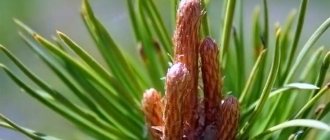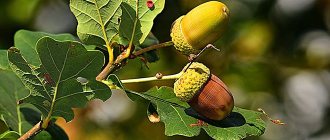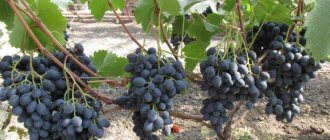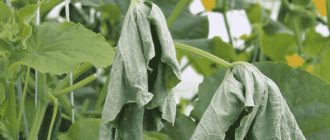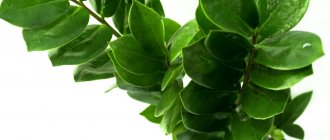Maturation cycle
Oak is a tree that belongs to the evergreen plant species. Its crown may not change for several years. However, there are breeds whose leaves fall off with the onset of the first frost. The inflorescences of the tree are unisexual and small. It is worth noting that the crown cover is poorly developed during pollination. Only female flowers are strong; male catkins can fall off at the slightest breath of wind. It is noteworthy that oak is a tree whose pollination requires scales from two sexes at once. The ripening of the fruit occurs in a roller, which is a small saucer. Subsequently, an acorn grows in it. Each type of oak tree has different fruits and ridge shapes. In some species, acorns are elongated, in others they are round and small, in others they are nut-shaped. It is allowed to cross breeds, but this will most likely lead to a noticeable reduction in yield.
The tree grows extremely slowly, but can live for hundreds of years. The root system is formed during the first year, then constantly develops. It is interesting that after cutting down an oak tree, powerful shoots sprout abundantly from the stump after some time. Oak is a tree that is not too picky about soil, so the soil can be anything. Natural reproduction occurs by acorns. The height of the oak tree varies up to 40-45 meters. The volume of the crown depends on the breed and climate.
Description of English oak
This type of plant is considered to be ordinary, since it is the most common in the European part of the planet. An oak tree sprouts from an acorn in just six months. Then, over the course of 20 years, its trunk, crown and roots are formed. The oldest trees reach a height of 50 meters. The trunk and branches are thick, powerful, and can withstand even heavy winds. Under moderate conditions and a developed root system, pedunculate oaks can live up to 1000 years. The bark is dark brown, thick. The leaves are oblong, grow in bunches, have from 3 to 7 blunt lobes with slight teeth. Such trees bloom in late spring. Common oaks love the sun very much, as they are a heat-resistant plant. Acorns are up to 3.5 cm long.
What ails oak
There are two types of diseases:
- Rotten. They are caused by fungi that penetrate the wood tissue through damage to the wood. They appear most often on old or weakened plants.
- Unrotten. These include necrosis, sapwood, and vascular diseases. They can develop very quickly and cause the plant to dry out within a few months.
Oak diseases are accompanied by the appearance of spots on the leaves, their yellowing and falling. This spoils the decorative appearance of the plant and also causes disruption of vital functions. As a result of damage to the branches, the oak crown partially or completely dies. Spreading to the tree trunk, the disease often leads to its death.
Leaf diseases
Brown spot and powdery mildew are the most common diseases of oak leaves. Both diseases are caused by a fungus and are manifested by the presence of characteristic spots on the leaves of the tree. A favorable factor for the development of diseases is high humidity and ambient temperature.
An oak tree affected by powdery mildew can be easily identified by white spots covering the entire area of the foliage. Damage to the crown leads to disruption of photosynthesis processes and, as a consequence, to a slowdown in plant growth and development. This is especially dangerous for young seedlings. Due to the disease, they do not have time to build up the required level of bark by the beginning of winter and die at the first frost.
The disease has several stages. At the end of summer, the fruiting bodies of the fungus appear in the form of black dots, clearly visible among the white coating on the leaves. The disease spores overwinter along with plant debris, and in the spring the oak is re-infected. Along with fallen leaves, the disease can spread to neighboring trees.
When infected with brown spot, greenish-yellow spots appear on oak leaves, which enlarge and merge over time. Closer to autumn, yellowish-brown growths can be seen on the back of oak leaves. These are the fruiting bodies of the fungus containing spores. The course of the disease, the damage caused and the spread of pathogens are in many ways similar to oak powdery mildew.
Necrosis-cancer and vascular diseases of trunks and branches
Necrosis of oak tissue is characterized by the death of the bark and outer layers of wood. The causative agent is fungal spores that enter the tissue through damaged areas of the bark. The most common diseases:
- Colpovy necrosis. Signs of the disease are areas of dying in the form of stripes. On branches and young seedlings, areas of necrosis are located around the circumference.
- Villeminian necrosis. The disease can be recognized by cracked bark and the presence of yellow to light brown films. White rot can often be found on a cut of infected wood.
Vascular diseases can occur as a result of fungal infection or pest activity. This category of diseases is characterized by damage to the oak conducting system. Outwardly, this is expressed by the appearance of dark rings or spots on the cut of the tree.
Vascular and necrosis diseases can be focal in nature. The pathological process can be acute or chronic. In the first case, the death of the tree can occur within a few weeks, in the second case, within several years.
Cancer diseases manifest themselves in the form of ulcers, growths and areas of exposed wood on the trunk and branches of oak. The most common are:
- Stepped cancer. On the tree trunk, areas of bark dieback with characteristic gradation are formed. The size of the wounds can reach 1 meter.
- Transverse cancer. Characterized by the presence of muff-like or one-sided sagging. The growths can grow, crack, and become open sores.
Cancer disease develops slowly over decades and does not itself cause the death of the plant. Drying of oak occurs due to the entry of other pathogens and pests through the resulting open wounds.
Rot diseases of roots and trunks
Rot diseases are caused by different types of fungi. The lesion is usually localized in the lower, less often in the middle, part of the trunk. The pathological process leads to weakening and subsequently drying out of the damaged plant. The most common types of illness include:
- white sapwood rot;
- sound white rot;
- red-brown rot;
- mottled heart rot;
- dark brown heart rot.
Signs of rot diseases are clearly visible on the oak cut. The wood of the affected tree becomes soft, loose, and easily breaks into fragments. Externally, the presence of rot can be indicated by various damage to the bark of a tree, hollow, or dry roadside.
Features of downy oak
Most often, representatives of this breed are found in Transcaucasia, Crimea, as well as in Asia Minor and southern Europe. The trees reach only 8-10 meters in height. They are durable and heat resistant. It must be said that such oak species are significantly inferior to many other varieties in height. But they have a very winding thick trunk with spreading branches. Due to its small size and wide crown, the plant often resembles a large shrub from a distance.
The length of the leaves sometimes reaches 10 cm. They are variable in shape, grow in pairs, the blades are slightly pointed, dark green. Interestingly, the scales surrounding the acorn are very fluffy and soft.
Favorite of gods and people - oak (tree)
Let's start the description with mythology, because dozens of peoples have revered this tree since ancient times and made up legends about it. Oak is considered one of the most popular on Earth. The ancient Greeks compared its mighty trunk and spreading crown with Zeus, the Romans - with Jupiter. A description of the oak tree would be incomplete without mentioning that among the ancient Slavs the tree personified the Thunder God - Perun.
People of different nationalities and religions treat oak with equal respect and find various uses for its wood, bark, leaves and fruits. It is difficult to say which part of the plant is most popular. A powerful trunk, an extensive root system and a wide crown are associated with power, strength, and longevity. The leathery leaves of the winter subspecies, which remain on the branches until severe frosts, personify unparalleled courage and perseverance.
Durable and solid oak wood is used in construction, furniture industry, and other industries. The bark contains a significant amount of tannins and other useful compounds that are used in the tanning industry, the forest chemical industry, and medicine. Acorns serve as food for numerous forest inhabitants. The population collects fruits for pets, planting beautiful trees in green areas, and making acorn coffee.
At the venerable age of 200–400 years, the height of trees can reach 40–50 m, diameter - 2 m. In different parts of the Earth there are older oak trees that live 700–2000 years. Usually such old specimens are declared natural monuments and taken under protection.
Holm oak structure
The homeland of the tree is considered to be the Mediterranean and Asia Minor. At the moment, they are actively cultivated in North Africa and Europe. This is an evergreen plant whose height is 22-25 meters. The trunk is gray, smooth. The crown is spreading and dense. The leaves themselves are small, variable in shape, shiny, bright green in color, and leathery. The fruits ripen only in the second year. Oak grows rapidly, regardless of the climate. It is suitable for frosts down to -20 degrees and heat up to +40. Shade-tolerant, drought-resistant. The breed is called stone due to the fact that trees mainly grow on rocks in mountainous areas.
Distinctive features of red oak
Most often found on river banks. Does not like stagnant water in the soil. North America, in particular Canada, is considered the birthplace of red oak. Such trees reach a height of 25 meters. Externally, the trunk is slender and smooth. The gray bark darkens and cracks over time. The oak crown is tent-shaped, green with yellowish tints closer to the ground. The leaves are large, sometimes their diameter reaches 25 cm. They have pointed blades. In autumn they turn red and fall off.
The fruits are small, spherical, no more than 2 cm in size. Ripe acorns are red, slightly brown. They ripen by the end of autumn; the first year is a poor harvest. Sustainable fruitfulness – up to 20 years. The tree is frost-resistant, calmly withstands strong winds and bright sun.
Oak trees
Oak is a forest long-liver: its average age is about 800 years. No one knows for sure how old this huge tree in Sherwood Forest (UK) is. However, the diameter of the lichen-covered trunk indicates that the oak is several centuries old.
The majestic oak tree with its powerful spreading branches can reach 40 meters in height and live for about 800 years. A huge number of birds and insects find shelter and food in its crown.
The common or European oak (Quercus robw) grows in the temperate zone of the Northern Hemisphere. This mighty deciduous tree is found throughout Europe - from Spain in the west and south to Ukraine in the east and Scotland in the north. Oak is a forest long-liver, living for about 800 years and reaching 40 meters in height. From the upper crown to the tips of the roots, the length of which is often commensurate with the height of the tree itself, all layers of this giant are densely populated throughout the year.
Spring Awakening
The end of hibernation and the beginning of a new life cycle is marked by the appearance of young leaves on the oak tree.
At the same time, insects wake up, the presence of which, in turn, attracts various insectivorous birds and animals. Of the leaf-eating insects, leaf roller caterpillars are the most common on trees in May. Attaching themselves to the branches with silky threads, they begin to destroy young foliage. The webs they weave are an ideal place for growing colonies of caterpillars and larvae of other insects. In spring, under the influence of sunlight, the clearing under the oak tree is transformed. The first to bloom are primroses, anemones and violets. Bluebells (pictured with oak seedlings) appear in May.
Larger stem pests include more than 100 species, the names of which usually indicate their habitat: oak borers, oak sapwood, oak variegated longhorned beetle, etc. In most cases, the protective coloring of caterpillars saves them from numerous birds that are more active at this time . Grasshopper warblers, common and blue tits, chaffinches, and forest songbirds circle above the top of the crown, and in the middle, as a rule, bullfinches and kinglets fly. In the bark of a massive trunk, nuthatch, woodpecker and common pika are looking for insects.
A robin and a blackbird settled down below, ready to pick up anything that fell to them from the upper branches. At night, bats, hedgehogs, male woodcock and deer gather around the oak tree to feast on caterpillars and insects. The tawny owl, which hunts birds, rodents and small mammals, also does not sleep.
A mature tree can produce up to 50,000 acorns per year, but only a few of them will grow into mature trees. Most acorns are eaten by birds and animals, picking them directly from the tree or picking them up on the ground. To germinate in the spring, the acorn must be constantly in moist soil.
Camel larvae are hiding under the lichen that has grown on the trunk. In the dry bark of a tree, bark beetles, stag beetles and other Coleoptera make internal tunnels and lay eggs. Unless a woodpecker finds the larva, it will eventually turn into an adult insect. This is the kind of invasion an oak tree has to withstand when spring arrives.
Regrowth of greenery
The young leaves destroyed by the larvae are replaced by new bronze-colored foliage.
which gradually turns green. The warm rays of the spring sun, freely penetrating between the branches of the oak tree, awaken the first flowers to life: primroses, anemones and violets. In May, a carpet of bluebells blooms in the clearing. Majestic oak in summer. During drought, a well-developed root system of a tree can pump up to 450 liters of water.
However, the oak truly appears in all its grandeur in the summer months, despite that. that drought is a difficult test for such a giant. Like most plants, the growth and maintenance of this tree is ensured by the process of photosynthesis, due to which energy is produced in green leaves under the influence of sunlight. A powerful root system supplies the tree with moisture and nutrients in abundance: for example, in one hot day, an oak tree can absorb more than 450 liters of water.
In summer, there are especially many butterflies near the oak tree, among which the most common are lacewings, oak tails, etc. Various species of bark beetles, longhorned beetles, and tree beetles parasitize the trunk. One of the types of weevils lives on the branches of the tree - the oak leaf beetle, the larva of which feeds on the pulp of acorns.
Shelter for forest dwellers
In the evening, large May beetles and stag beetles appear near the oak tree.
Having taken a position on high branches, the male nightjar continuously monitors the female, who sits in a nest hidden in fallen leaves. The spreading branches of the oak tree allow sunlight to pass through well, which makes it possible for a variety of herbs, ferns and blackberries to grow under the tree, which feed on herbivores: voles, shrews, rabbits and deer. Woodcock hides in the leaves. A fox dug a hole between the intertwined roots, which, if necessary, does not disdain the worms and larvae that live here in abundance.
In autumn, green oak leaves turn golden yellow before they dry out. The fallen leaves are processed by microorganisms, resulting in the formation of nutrient-rich humus.
Autumn changes
In the fall, an oak tree alone can produce about 50,000 acorns, of which only a few grow into a mature tree.
Acorns ripen in the first weeks of autumn. Many birds and animals love to eat these fruits, and some of them store acorns for the winter. Jays and squirrels can carry them over long distances, which ensures the spread of oak in the area. An acorn placed in moist soil, as a rule, sprouts in the spring, and in 6 months it grows by about 15 centimeters. But only after 100 years will the young seedling turn into an adult tree. For a long time, in villages there was a tradition of grazing pigs in the forest in the fall, which ate acorns, which saved deer and other inhabitants from the threat of poisoning by unripe green fruits. In addition, the peasants were actively engaged in collecting truffles - a rare, delicious and expensive mushroom growing on the roots of oak trees.
In autumn it is mushroom time. Liver fungus grows on living tree bark, forming brownish layers like steps with jagged edges. Powdery mildew and false oak tinder fungus can be parasitic on dried branches.
The oak tree is home to a wide variety of insects, mammals and birds, including the European jay (pictured). Insects living under the bark and in the crown of the oak serve as food for adult birds, while their chicks hide in a nest built among overgrown branches.
Before the onset of cold weather, a plug forms in the leaf stalk at the point where it joins the branch, preventing the supply of water and nutrients. A slowdown and complete cessation of the circulation of vital juices occurs against the background of yellowing and falling leaves.
In the fall, earthworms work hard to process fallen leaves into humus, which contains nutrients that the tree will use next year. In addition, centipedes, millipedes, woodlice, snails, slugs and ants live in the soil, which also contribute to soil formation.
In autumn, there are especially many spiders in the forests, weaving their webs around all the tiers of the oak tree. Birds that gain weight before the arrival of winter or accumulate strength for a long flight to Africa feed on arachnids.
Hibernation
Before the onset of cold weather, the oak is already ready for the harsh trials of winter.
But even at this time, life here does not completely freeze. The powerful, centuries-old trunk is entwined with heavily overgrown ivy and often mistletoe (ripening just in time for Christmas), as well as moss, algae, lichens and ferns. Bare branches indicate that the oak is sleeping. Under a tree, in a litter of fallen leaves, a wood mouse, a vole and a shrew scurry in search of food, which, in turn, are hunted by an ermine, a weasel and a fox.
A squirrel built a nest among the branches; underground, in a hole among the roots, a badger sleeps, occasionally leaving its shelter only in warm weather.
A woodpecker brings insects to its chicks. The nest, built deep in a rotted oak trunk, will protect the chicks from predators and bad weather until they grow up and can leave their safe shelter.
The female badger gives birth to her cubs in February, shortly before the onset of warm weather, causing the tree itself to awaken.
The most famous species
Sessile or sessile oak (Quercus petraea) has a tall growing crown, as well as a straighter and thinner trunk compared to its European relative.
This species can reach 30 meters in height and live up to 800 years. The leaves are obovate, oblong, with 5-9 pairs of elongated entire or coarsely toothed lobes. Acorns are attached to a short stalk. Sessile oak is found primarily in higher, hilly areas. The homeland of red oak (Quercus bureaus) is North America. The leaves are deeply pitted, thin and shiny, with 4-5 pointed lobes on each side of the leaf. This tree gets its name from its bright red fall leaf color. Red oak acorns have a more rounded shape.
Gauls
Galls (from Latin galla - ink nut) are growths formed on oak under the influence of the development of insect larvae: gallworms or aphids. Females 3 mm long with wings lay eggs in the roots of the oak tree, from which in winter other - wingless - females emerge and begin to slowly climb the trunk to the branches of the oak tree, where they lay eggs.
Galls—growths on leaves—are found on many oak trees. The larvae of tiny gall moths mature in them and other types of insects often settle.
In spring, green galls grow on young shoots around the buds, surrounding the larva growing inside. At the end of summer, an adult insect, gnawing a hole in such an “ink nut”, comes out.
There are more than 30 different species of gallworm, each of which produces a characteristic growth on the oak tree, in which an entire community of these insects forms, attracting other parasitic species. During the summer, galls can change their color. When they fall in the fall, they serve as food for wood mice.
Oak groves are in danger
The degradation of oak forests appears to be of a pan-European scale, although its causes are likely to vary. The results of a 1999 inventory of forest damage in Germany show that oak, along with fir, is the most severely damaged species, in this regard, it differs sharply from pine, spruce and beech. Unfortunately, this continent-wide scale of the process of degradation of oak forests has not yet been recognized either by the relevant government structures or environmental organizations.
- Did you know?
- In the UK, Inknut Day, or Royal Oak Day, is celebrated on 29 May to celebrate the restoration of Charles II to the throne. This day commemorates the king's rescue from Cromwell's pursuing soldiers after the Battle of Worcester (1651). Then Charles II hid in an oak tree near Boscobel.
- The oak tree now growing in Boscobel is not the tree that sheltered Charles II - it actually grew from the acorn of its famous ancestor.
- Oak and ash are often mentioned in folk superstitions. For example, if the leaves of an oak tree bloom earlier than those of an ash tree, there will be a good, fruitful year. And vice versa, if the ash tree turns green first, the summer will be cold and the autumn will be barren. According to popular observation, since summers in England are usually rainy, the ash tree should be the first to bloom.
Interesting Facts About White Oak
The plant is native to the east coast of North America. Large stands are found in forests with limestone-rich soil. Easily gets along with other oak species. It is important that the habitat is no higher than a kilometer above sea level. White oaks do not tolerate severe frosts. The height of an adult tree is about 30 meters. The crown is powerful, tent-shaped, formed by spreading branches. The color of the bark is gray. Old trees hardly crack, unlike petiolate trees. The leaves are oval, large (up to 22 cm), have up to 9 lobes. During blooming they turn red, in summer they turn green, and closer to winter they turn purple and fall off. The length of the acorn is up to 2.5 cm. The fruits are almost not covered by scales, so they often fall from the tree from strong gusts of wind.
English oak (Quercus robur) - a diverse representative of Western European and Russian forests
This species has become most widespread in landscape design and is a component of coniferous-deciduous forests. It grows best in nutritious soils in open areas with sufficient light, tolerates dry and windy weather well, and does not like waterlogging. The height of an adult tree can reach 50 meters. When grown as part of group plantings, it has a high-set crown and a slender long trunk; when used as a tapeworm, the crown becomes wide and has a low planting. Leathery leaves with a maximum length of 15 cm are characterized by an obovate or oblong shape with non-pointed blades (no more than 7). These oak representatives are among the most durable species, with a lifespan of about 1500 years.
English oak is represented by several varieties, each of which has its own characteristic features:
- Atropurpurea - shoots and foliage have a wine color, which changes to green-violet in autumn. Oak is able to grow only in areas protected from draft cold winds;
- Compacta – a rounded crown is formed on a low trunk;
- Variegate - has white leaves with variegated splashes of color;
- Concordia is a low-growing oak with leaves whose color changes from bright yellow during the blooming period to green and copper in summer and autumn, respectively;
- Fastigiata Koster – forms an original crown in the vertical direction;
- Pyramidalis is a low-growing oak with a narrow crown shaped like a pyramid;
- Asplenifolia is a low oak with a rounded crown with small leaves, densely dissected along its entire length.
Description of large-fruited oak
These trees are a North American species. They grow up to 30 meters high. The trunk is thick, brown in color, and severely cracks after several years from the moment of germination. The tent-shaped crown shape is achieved by powerful spreading branches.
The foliage is oblong, lobed, dark green in color, glistening in the sun and after rain. In autumn, the entire crown falls off, sometimes along with thin branches. It is worth noting that the diameter of the leaves is 25 cm. The acorns are large, often reaching a length of 5 cm. They are oval in shape, covered by scales by a third. Large-fruited oak germinates at an average speed. The seeds are very moisture-loving and frost-resistant. Because of this, the breed is considered decorative.
Reserved chestnut oak
Widely distributed in Armenia, Iran and the north of the Caucasus. Cannot be cultivated. Most of the plantings are wild. In the mid-20th century, these trees were listed in the Red Book, so their felling is strictly prohibited. In the Hyrcanian Nature Reserve, they are monitored by specially trained people. Interestingly, the chestnut oak is a mixture of several wild species that grow primarily on ridge crests. Very light-loving, moderately resistant to frost, but does not tolerate drought.
When the oak leaves bloom, the tree looks like a huge chestnut tree, 30 meters high. The trunk is quite slender and thin, the branches are spreading. Large chestnut-shaped leaves further emphasize the grandeur of the tent-shaped crown. Acorns swell up to 3 cm in length.
Swamp oak (pyramidal)
The southern regions of Canada are considered the birthplace of the breed. The tree reaches a height of about 25 meters. The crown from a distance resembles a pyramid. It is worth noting that the trunk practically merges with the leaves. The fact is that the bark of the swamp oak is completely green with an admixture of brown. The leaves are medium-sized and have deep notches and teeth. The crown color is green, but by autumn it turns purple. The fruits are spherical, sessile, about 1.5 cm in diameter. Oak seeds love water, just like mature trees. For additional moisture, the root system goes deep into the ground. The breed's habitat is marshy areas. The pyramidal oak grows quickly, but dies during prolonged frosts. Often large wild stands can be found on the shores of lakes and reservoirs.
Botanical description [edit | edit code ]
A large, usually strongly branching tree with a huge crown and a powerful trunk. Reaches a height of 20-40 m. It can live up to 2000 years, but usually lives 300-400 years. Height growth stops at the age of 100-200 years; the increase in thickness, although insignificant, continues throughout life [2]. Probably the oldest representative should be considered the Stelmuža oak with a trunk circumference of 13 m in Lithuania. Its age, according to various estimates, is from 700 to 2000 years.
The root system consists of a very long tap root; from six to eight years of age, lateral roots begin to develop, also going deep into the ground.
The crown is dense, tent-like or wide-pyramidal, asymmetrical, spreading, with strong branches and a thick trunk (up to 3 m [3] in diameter). In young trees, the trunk is irregular, geniculate, and with age it becomes straight and cylindrical. In closed plantings, the crowns are smaller and the trunks are more slender (up to 1 m in diameter [3]).
The bark is dark gray, blackish, thick. Young oak trees have gray, smooth bark. In the 20th-30th year, more or less deep cracks form on the bark. Trees grown in freedom have bark up to 10 cm thick.
Young shoots are fluffy, brown or reddish-gray, shiny, with brown spots and slightly oblong lenticels.
The buds are obtuse pentagonal, 5 mm long and 4 mm wide, the lateral ones are slightly smaller and spaced apart; The scales are numerous, five-rowed, rounded, brown, bare and ciliated only along the edge. All buds are usually ovoid, almost spherical, light brown, rounded or bluntly pointed at the apex, leaf scar with 7-15 marks. The apical buds are surrounded, for the most part, by several lateral ones.
The leaf arrangement is alternate, at the top of the branches in the form of bunches. The leaves are oblong, oblong-obovate, narrowed downward or heart-shaped, often with ears, obtuse or notched at the apex, pinnately lobed, large (40-150 mm long, 25-70 mm wide), with four to seven lobes, hard, almost leathery, dark green above, shiny, yellowish or green below, with very prominent lighter veins, bare on both sides, with short petioles up to 10 mm long, always falling off in winter. The blades are blunt, rounded, the notches between them are shallow.
Flowers are dioecious. Flowering begins in trees between 40 and 60 years old, along with the leaves blooming - usually in May. The plant is monoecious. Staminate flowers are collected in long pendulous catkins 20-30 mm long, with ten or more flowers, two or three together or singly on the tops of last year's shoots or in the lower part of young shoots. Each flower sits distant from the other, so a peduncle is clearly visible between them, has a five- or seven-parted, fringed, membranous, greenish perianth at the edges, as well as five or six or more (up to 12 [3] ) stamens with short filaments and large yellow anthers. Female flowers are usually located on young shoots higher than male ones, collected in small groups of two or three together on a separate reddish stalk, have a six-parted, reddish perianth at the edges, surrounded by hairy green scales with reddish apex, representing the future plus. The ovary is three-lobed, red, the stigma is thread-like, slightly protruding outward. Nests in the ovary are formed only after pollination, three in number, with two eggs in each. Each ovary usually develops only one acorn. Acorns hang in pairs, less often - one to five on a stalk up to 80 mm long.
Flower formulas: ∗ P ( 4 − 8 ) A 4 − 12 <(4-8)>;A_<4-12>> > ; ∗ P ( 8 ) G ( 3 ¯ ) <(8)>;G_<(<3>>)>> > [4] .
The fruit is a nut (acorn) bare, brownish-brown (1.5-3.5 cm long and 1.2-2 cm in diameter [3]), on a long (3-8 cm) stalk. The acorn is placed in a saucer or cup-shaped bowl - plus (0.5-1 cm long). The fruits ripen in September - October.
There are two known forms of common oak - early and late. The leaves of the early one (“summer oak”) bloom in April–May and fall off for the winter, while the leaves of the late one (“winter oak”) bloom two to four weeks later. At the same time as the leaves bloom, the oak blossoms. Wind pollinated. The leaves fall later than many other trees, at the end of September - October. On young winter oak plants, the leaves turn brown in the fall, but sometimes remain on the tree throughout the winter [3].
Acorns have good germination rates and are distributed by birds, mainly jays. Until eight to ten years, seedlings grow slowly, later the average height increase is 30-35 cm per year, and at times - 1-1.5 m per year. In mid-summer, secondary (“Ivanov’s”) shoots begin to grow. Growth in height continues up to 120-200 years. Renewal is also ensured by stump growth. Most modern oak forests are of coppice origin. Oak develops a powerful root system early, which allows it to use a large volume of soil and resist wind blows. Single-standing trees begin to bear fruit at 40–60 years of age, and in closed plantations even later [3].
Growing and Reproduction
Seedlings of English oak and large-fruited oak are very demanding of moisture and mineral wealth of the soil. That is why they quickly emerge in floodplains and deep forest loams. It is not recommended to sow oak seedlings in podzol soil. In such soil, the sprouts will quickly die, since the roots will not be able to gain a foothold due to the high acidity of the humus. It is advisable to sow acorns in late autumn. The fruits must be fresh. If you allow the acorns to dry out at the slightest level, the germination rate will decrease significantly. Planting depth is from 5 to 8 cm. Before growing an oak tree, it is important to know that the soil must be fertilized when sowing. To protect the sprouts from pests, it is necessary to cover them with spruce branches. It is also important to maintain a stable soil temperature (at least +2 degrees).
Many gardeners wonder how to grow an oak if other trees, due to circumstances, do not produce acorns. For this, you can use the breeding procedure. Green cuttings should be rooted in the first half of summer. It would be a good idea to use special heteroauxins as fertilizer. In addition, you need to know that cuttings of young trees germinate much faster and easier than cuttings of old ones (more than 20 years).
And a few more recommendations for replanting oak trees:
- try to transplant the oak to a new place with part of the old soil in which it grew, this will allow the tree to take root better;
- when replanting, it is important to choose the right place so that the soil is fertile and acidic;
- oaks are not a capricious plant; they tolerate drought well. However, at a relatively young age of 1 to 2 years, it would be better to protect it from sunlight, otherwise the oak may burn. You can cover it with something or put something that will create shade.
- By mid-summer, the oak tree may become infected with an infection called powdery mildew. How to eliminate the infection is written in the article “ Plant an oak tree. How to do this correctly? »
Write your comments and share your impressions!
Peculiarities of oak pruning
Representatives of this family of trees love careful care, despite the fact that they are considered wild. The pruning procedure especially affects the yield. Oak is a tree with monopodial branching. Therefore, the main stem must continue to grow for the rest of the plant's life. In this case, the top cannot be limited in height. It always dominates other shoots. Branch pruning should be done every few years. The optimal period for removing branches would be early spring or late winter. It is important that the air temperature is not lower than -5 degrees. Otherwise, frostbite will appear at the cut sites. By summer, these branches will dry to the ground. If there are a large number of them, the entire tree will die. Only new shoots, growths and diseased branches should be removed.
Oak is a dioecious, monoecious plant
Loose male inflorescences consist of small, inconspicuous corollas. Drooping catkins appear in April-May, almost simultaneously with the leaves blooming, but only on mature trees. The female flowers are also inconspicuous, they are located singly or several on the peduncle.
Oak serves as a source of cool shade in summer, and its branches are harvested at this time for bath brooms. The leaves are rich in beneficial compounds; their large size allows a lot of healing steam to be pumped into the body, which has antimicrobial, analgesic and anti-inflammatory effects.
Useful and harmful properties of oak
For medicinal purposes, the bark and young branches of the tree, as well as acorns, and less often leaves are often used. The upper layers of the oak trunk contain a lot of resin, acids, sugar and pectin. The fruit contains useful substances such as organic oil, proteins, and starch. Young leaves contain tanning components, dyes and pentosan groups. Thanks to this, effective anti-inflammatory drugs are produced from the tree and fruits.
The antispasmodic properties of oak are also well known. For example, tree bark effectively helps with colitis, intestinal bleeding, gastritis, spleen and liver disease. Oak tinctures increase mental and physical activity, calm the central nervous system, and improve the patency of the vascular system. On the other hand, preparations based on this plant are contraindicated for children and patients suffering from constipation, hemorrhoids, nausea, and stomach ulcers.
Resource usage
Oaks are mostly used in construction and cooking, as well as in light industry. Sawdust is used to make corks and furniture. The wood is optimal for surface vessels, fortifications, machine building, and barrel making. The boards do not swell, do not burn well, and are durable, hard and dense. When the oak leaves bloom and the acorns ripen, it’s time for the cooks. In North America, the fruits of the tree are often added to coffee, candy and the most delicious dishes. In Asia, acorns are eaten fried with spices.
